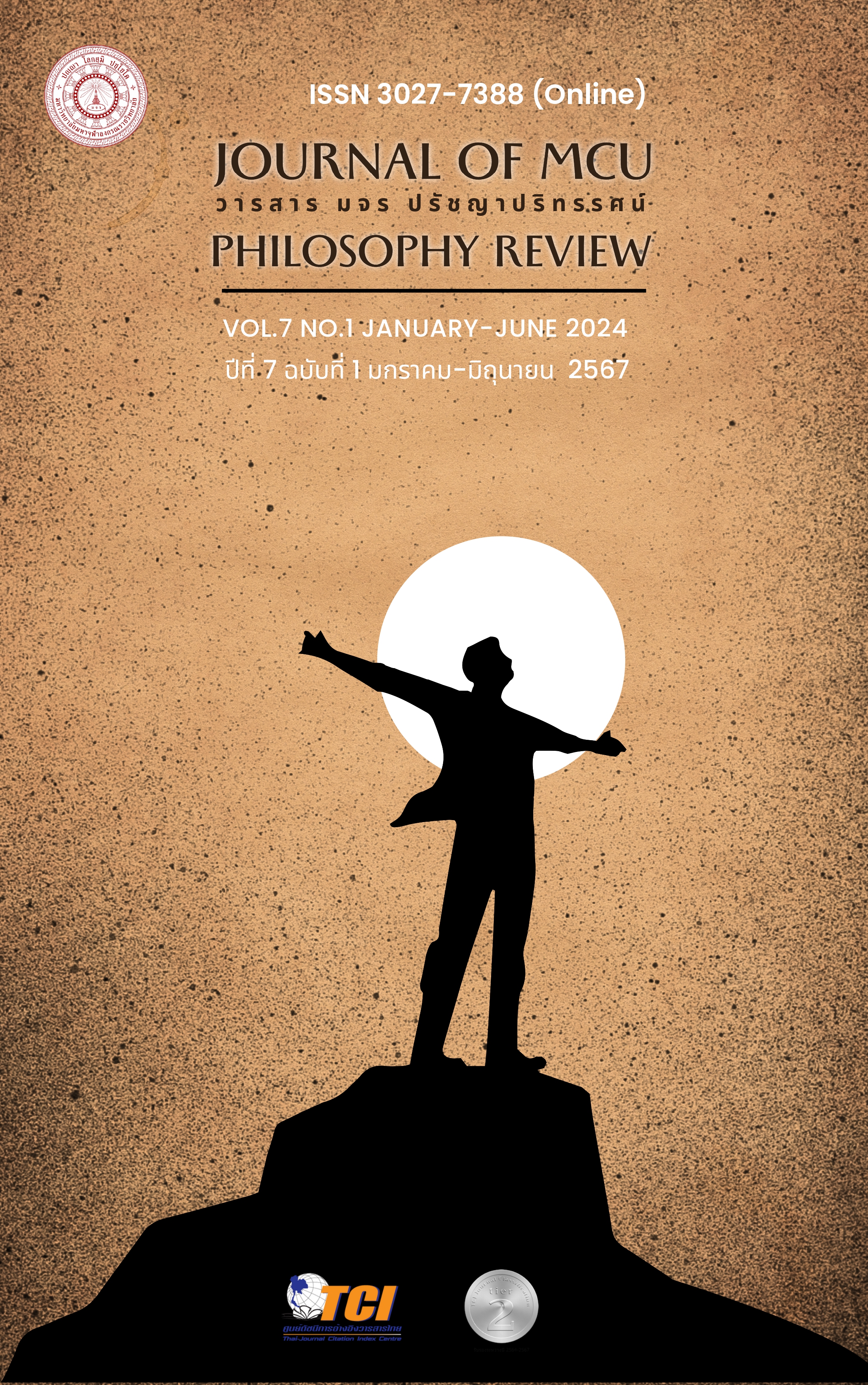Administrator’s Role and Scout Management in School Under the Secondary Educational Service Area Office Kanchanaburi
Main Article Content
Abstract
The purpose of this research was to study: 1) administrator's role in school under the Kanchanaburi Secondary Educational Service Area Office 2) scout management in school under the Kanchanaburi Secondary Educational Service Area Office 3) the relationship between the administrator's role and scout management in school Under the Kanchanaburi Secondary Educational Service Area Office. The samples were 28 schools under the Kanchanaburi Secondary Educational Service Area Office. The total of 112 respondents. The research instrument was an opinion questionnaire regarding the role of administrators. According to the ideas of Farren & Kaye and scout management criteria in school for organizing scouting activities in schools of the student. The statistics used for the data analysis were frequency, percentage, arithmetic mean, standard deviation and Pearson's product moment correlation coefficient. The results of the research were as follows: 1) Administrator's role of school under the Kanchanaburi Secondary Educational Service Area Office as a whole and each aspect, were at high level arranged from the highest to the lowest as follow: facilitators, forecasters, promoters, evaluator, counselor. For the standard deviation, the value is between 0.62-0.74. The dispersion of the information is low. That means the respondents has the correlated answers. 2) Scout management in school under the Kanchanaburi Secondary Educational Service Area Office as a whole and each aspect, was at high level arranged from the highest to the lowest as follow: the management of scout activities, the Boy Scouts, the school administrators, scout director, outstanding performance. For the standard deviation, the value is between 0.68-0.87. The dispersion of the information is low. That means the respondents has the correlated answers. 3) Administrator's role and scout management in school under the Secondary Educational Service Area Office Kanchanaburi as a whole were at high level of relationship between them with statistically significant at the .01.
Article Details

This work is licensed under a Creative Commons Attribution-NonCommercial-NoDerivatives 4.0 International License.
บทความที่ได้รับการตีพิมพ์เป็นลิขสิทธิ์ของวารสาร มจร ปรัชญาปริทรรศน์
ข้อความในบทความที่ได้รับการตีพิมพ์ในวารสาร ถือเป็นความรับผิดชอบของผู้เขียนบทความ และข้อคิดเห็นนั้นไม่ถือว่าเป็นทัศนะและความรับผิดชอบของกองบรรณาธิการวารสาร มจร ปรัชญาปริทรรศน์
References
ณัฐรินี คันศร. (2566). บทบาทของผู้บริหารสถานศึกษาด้านความสัมพันธ์ระหว่างโรงเรียนกับชุมชน ของโรงเรียนสังกัดสำนักงานเขตพื้นที่การศึกษามัธยมศึกษากรุงเทพฯ เขต 2. วารสารการบริหารนิติบุคคลและนวัตกรรมท้องถิ่น, 9(8), หน้า 12-21.
พระราชบัญญัติลูกเสือ พ.ศ.2551. (2565). สำนักงานคณะกรรมการกฤษฎีกา. สืบค้นข้อมูลเมื่อวันที่ 6 กุมภาพันธ์ 2565 จาก http://www.scoutthailand.org/file-upload/pdf20200423085634-D1BF4.pdf
วริญญาภัทร์ สุภาศิริธนานนท์. (2563). บทบาทผู้บริหารกับบรรยากาศองค์กรของโรงเรียนประถามศึกษาจังหวัดนนทบุรี. วิทยานิพนธ์ปริญญามหาบัณฑิต. ภาควิชาการบริหารการศึกษาบัณฑิตวิทยาลัย ศิลปากร.
วีรนุช พิสมัย. (2563). การบริหารงานกิจกรรมลูกเสือสามัญรุ่นใหญ่ในโรงเรียนมัธยมศึกษา สังกัดสำนักงานเขตพื้นที่การศึกษามัธยมศึกษา เขต 2. วารสารวิชาการมหาวิทยาลัยราชภัฏอุดรธานี, 8(2), หน้า 56-57.
สายฟ้า หาสีสุข. (2563). การพัฒนาแนวทางการบริหารกิจกรรมลูกเสือ-เนตรนารีในสถานศึกษาสังกัดสำนักงานเขตพื้นที่การศึกษาประถมศึกษาบุรีรัมย์เขต 4. วิทยานิพนธ์ปริญญามหาบัณฑิต. มหาสารคาม: มหาวิทยาลัยมหาสารคาม.
สำนักงานวิชาการและมาตรฐานการศึกษา. (2553). แนวทางการจัดกิจกรรมพัฒนาผู้เรียน ตามหลักสูตรแกนกลางการศึกษาขั้นพื้นฐาน พุทธศักราช 2551. กรุงเทพฯ: โรงพิมพ์ชุมนุมสหกรณ์การเกษตรแห่งประเทศไทยจำกัด.
สำนักลูกเสือ ยุวกาชาด และกิจการนักเรียน สำนักงานปลัดกระทรวงศึกษาธิการ. (2551). กิจกรรม พัฒนาผู้เรียน กิจกรรมลูกเสือ-เนตรนารี. กรุงเทพฯ: โรงพิมพ์วัฒนาพานิช.
สรรพสิทธิ์ ศรีระวรรณ. (2563). การพัฒนาแนวทางการบริหารการจัดกิจกรรมลูกเสือ-เนตรนารีในสถานศึกษาสังกัดสำนักงานเขตพื้นที่การศึกษามัธยมศึกษาเขต 2. วารสารการบริหารการศึกษาและภาวะผู้นำ มหาวิทยาลัยราชภัฏสกลนคร. 8(3), หน้า 128-129.
อำไพ โสดาดี.(2562). บทบาทผู้บริหารกับการนำและการจัดการลูกเสือที่ในโรงเรียนสังกัดสำนักงานเขตพื้นที่การศึกษามัธยมศึกษา เขต 9.วารสารการบริหารการศึกษา มหาวิทยาลัยศิลปากร, 10(1), หน้า 182.
Best, John W. Research in Education. New York: Prentice, 1970.
Farren Caela and Kaye L.Beverly. (1996). new Skills Leadership Roles, in The Leader of the Future. 3rd ed. New York : The Drucker Foundation.
Krejicie, Robert V. and Daryle W. Morgan. (1970). Determining Sample Size for Research Activities. Journal for Education and Psychological Measurement, 3(7), p.608.
Likert and Rensis. (1992). New Pattern of Management. New York: McGraw–Hill.
Lunenburg Fred C. and Allen C. Ornstein. (2012). Educational Administration: Concepts and Practices. 6thed. Belmont CA: Wadsworth Cengage Learning, 2012.


